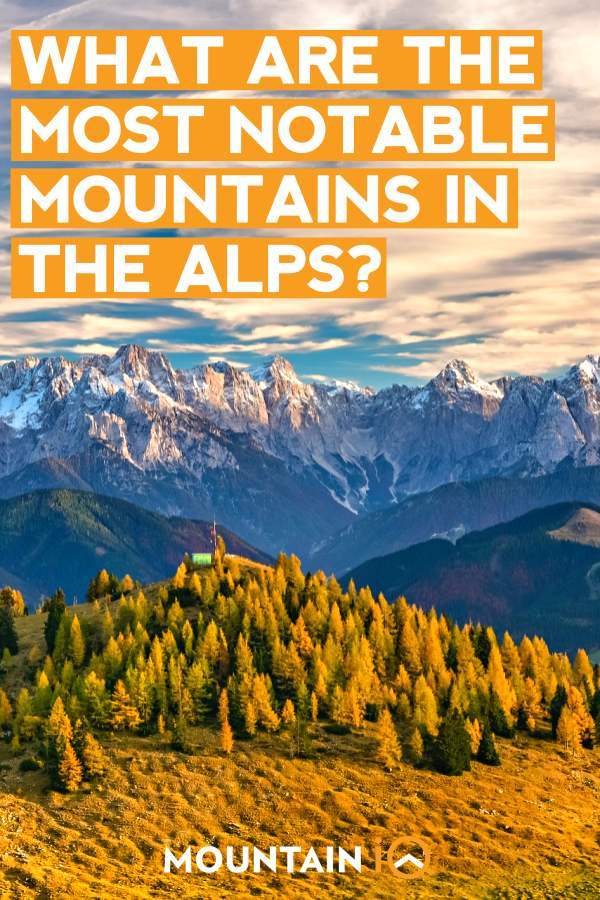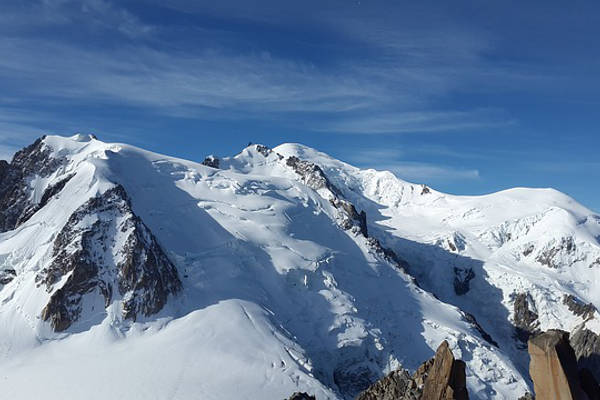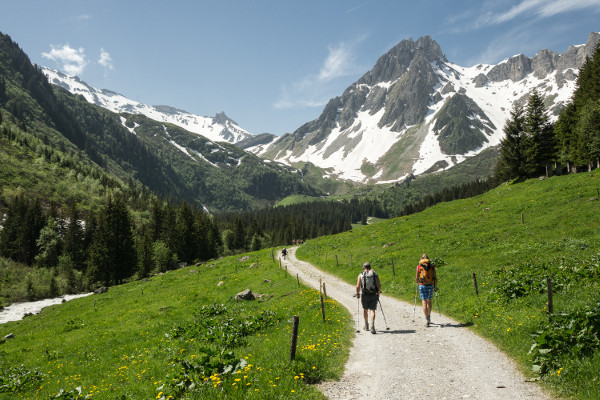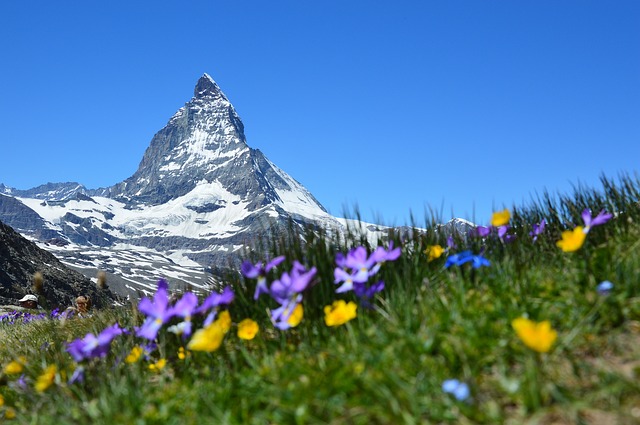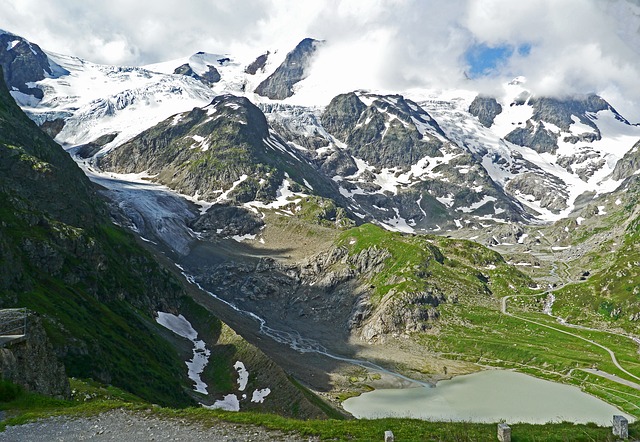The Alps are a range of mountains in Europe that stretch from Italy through France, Switzerland, Liechtenstein, Germany, Austria and Slovenia.
The range is home to Mont Blanc, which at 4,810m, is the tallest mountain in western Europe.
This guide will provide you with important information about the Alps, as well as information on the most notable hikes and mountains within the range.
The Alps
Length: 1,200km
Geology
The Alps form a part of a Genozoic organic belt of mountain chains called the Alpide belt. This belt stretches throughout Europe and Asia all the way from the Himalayas.
The mountain belt formed during the Alpine Orogeny. The belt is discontinuous due to a gap which separates the Alps from the Carpathians.
The Alps, which are separated into the eastern, central and western alps, arose due to the collision of the African and Eurasian tectonic plates.
Topography
The Alps are the most prominent of western Europe’s physiographic regions. With a variety of elevations and shapes. The Alps boast incredibly unusual and complex topography.
They extend north from the subtropical Mediterranean coast of Nice, France to Lake Geneva before trending east-northeast to Vienna.
Many mountain villages are scattered throughout the alpine regions. You will also find a number of ski resorts and railways as well as natural features like alpine lakes and vast glaciers.
Climate
The location of the Alps as well as variations in elevation and exposure can lead to extreme differences in climate, not only between separate ranges but within an individual range itself.
Winds play a prominent role in the daily weather and microclimate conditions of the Alps.
The climate of the Alps is affected by four main climatic influences; mild, moist air from the west, cool/cold polar air from Northern Europe, continental air masses (cold and dry air in winter and hot air in summer), and from the south warm Mediterranean air flowing northwards.
The daily weather is influenced by the location and passage of cyclonic storms as well as the direction of the winds as they pass over the mountains.
The Alps are split into 5 climatic zones in which the weather varies:
- Colline zone (500m-100m)
- Montane zone (800m-1,700m)
- Sub-alpine zone (1,600m-2,400m)
- Alpine zone (extending from treeline to snowline)
- Glacial zone (covers the glaciated areas of the mountains)
Wildlife and Plants
Several vegetation zones occur in the Alps due to the extreme variations in elevation. At just below 1,000m you will come across lush alpine meadows where cows and sheep graze during the short summers.
On the valley floors and lower slopes, you will find a variety of deciduous trees. At higher levels the largest extent of the forest is coniferous and once you reach above the snowline, the snow is permanent.
The southern reaches of the Maritime Alps and the southern Italian Alps are home to Mediterranean vegetation.
Several species of animals have adapted to the harsh alpine conditions; such as the ibex, wild goat and charmois, marmots, mountain hare, ptarmigan and grouse.
A number of national parks exist amid the ranges to protect the native fauna.
Mountain Regions in the Alps
Swiss Alps
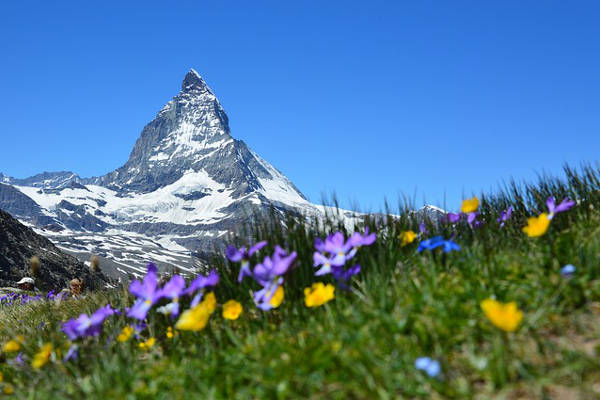
The Swiss Alps, one of the most recognizable symbols of Switzerland, covers around 65% of the country’s surface area, making Switzerland one of the most alpine countries.
Monte Rosa (4,634m above sea level) is the highest point in the Swiss Alps.The region also contains around 1800 glaciers including the largest glacier in the Alps, Aletsch Glacier.
The Swiss Alps is one of the most beautiful mountain ranges in the world.
Austrian Alps
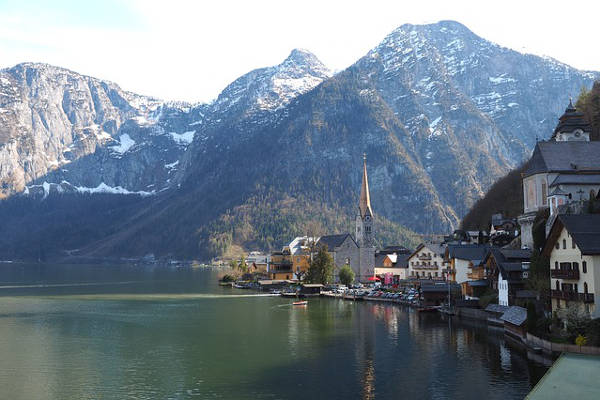
The Austrian Alps, also called the Central Eastern Alps, are situated mainly in Austria but do extend to Lake Como in Italy and adjacent regions in Switzerland and Slovenia.
At 3,979m, Mount Großglocker is the highest point in the Austrian Alps.
French Alps
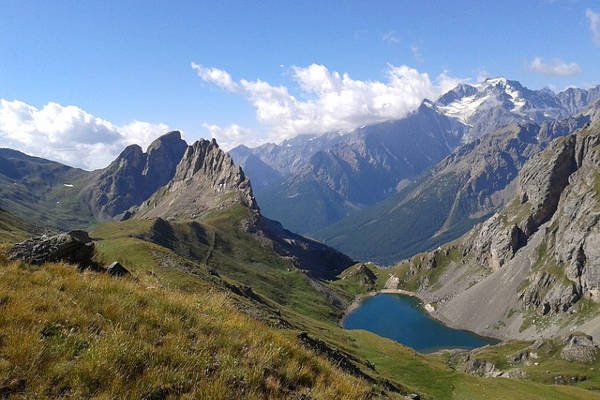
The French Alps are known for their incredible natural beauty. The region is known for its stunning alpine lakes; with the largest being Lake Geneva, Lac d’Annecy and Lac de Bourget. These lakes are year-round attractions due to their beauty and water sport opportunities.
The region is home to famous resort towns like Charmoix, St. Gervais, Albertville, Grenoble and Annecy. The region is also host to Mont Blanc, the highest mountain in the Alps, standing at 4808m.
Italian Alps
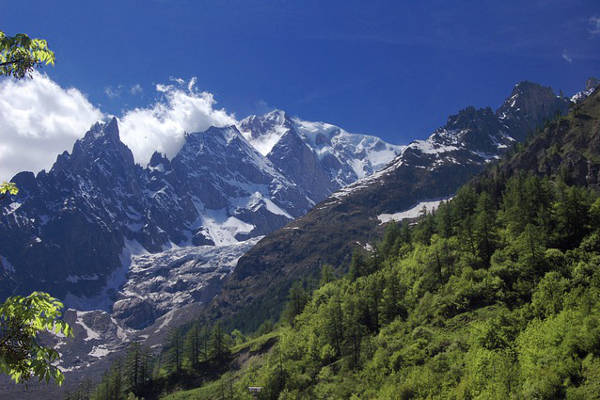
Mount Gran Paradiso is the highest point, at 4,061m. The region is also home to Gran Paradiso National Park, the oldest national park in Italy.
Bavarian Alps
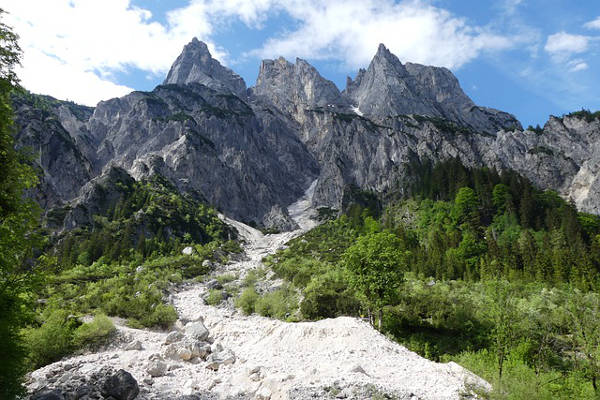
This alpine region makes up less than 10% of Germany’s total surface area, but it is certainly one of the most beautiful landscapes in the country.
Julian Alps
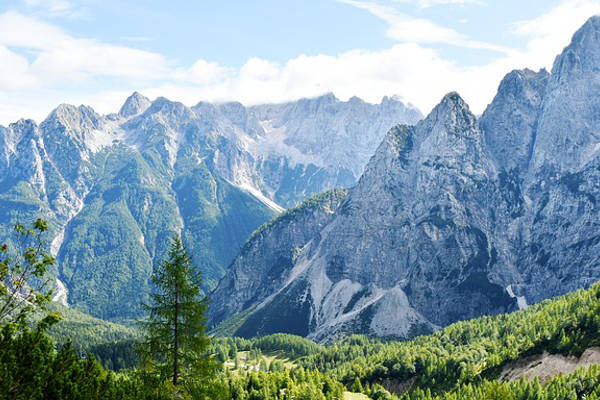
The highest point in the Julian Alps is Mount Triglav at 2,864m. The largest portion of this alpine region is located in the Triglav National Park, home to Mount Triglav. The region offers incredible views, crystal-clear water, alpine valleys, rivers and lakes.
Notable Mountains in the Alps
The Alps are home to 128 summits and subsidiary tops of 4000m above sea-level or higher, they refer to these mountains as ‘four-thousanders,’ 82 of these are ‘official summits’ with the inclusion of 46 ‘lesser summits.’
Here is a bit about the most notable mountains in the Alps.
Mont Blanc, meaning ‘white mountain,’ is the highest mountain in the Alps at 4,808m and is ranked 11th in the world in topographic prominence. Mont Blanc is both French and Italian and is considered to be the border between the two countries, however the summit is in the French territory. The mountain stands in the range called the Graian Alps.
The mountain was first summitted in 1786 by Jacques Balmat and Michel-Gabriel Paccard.
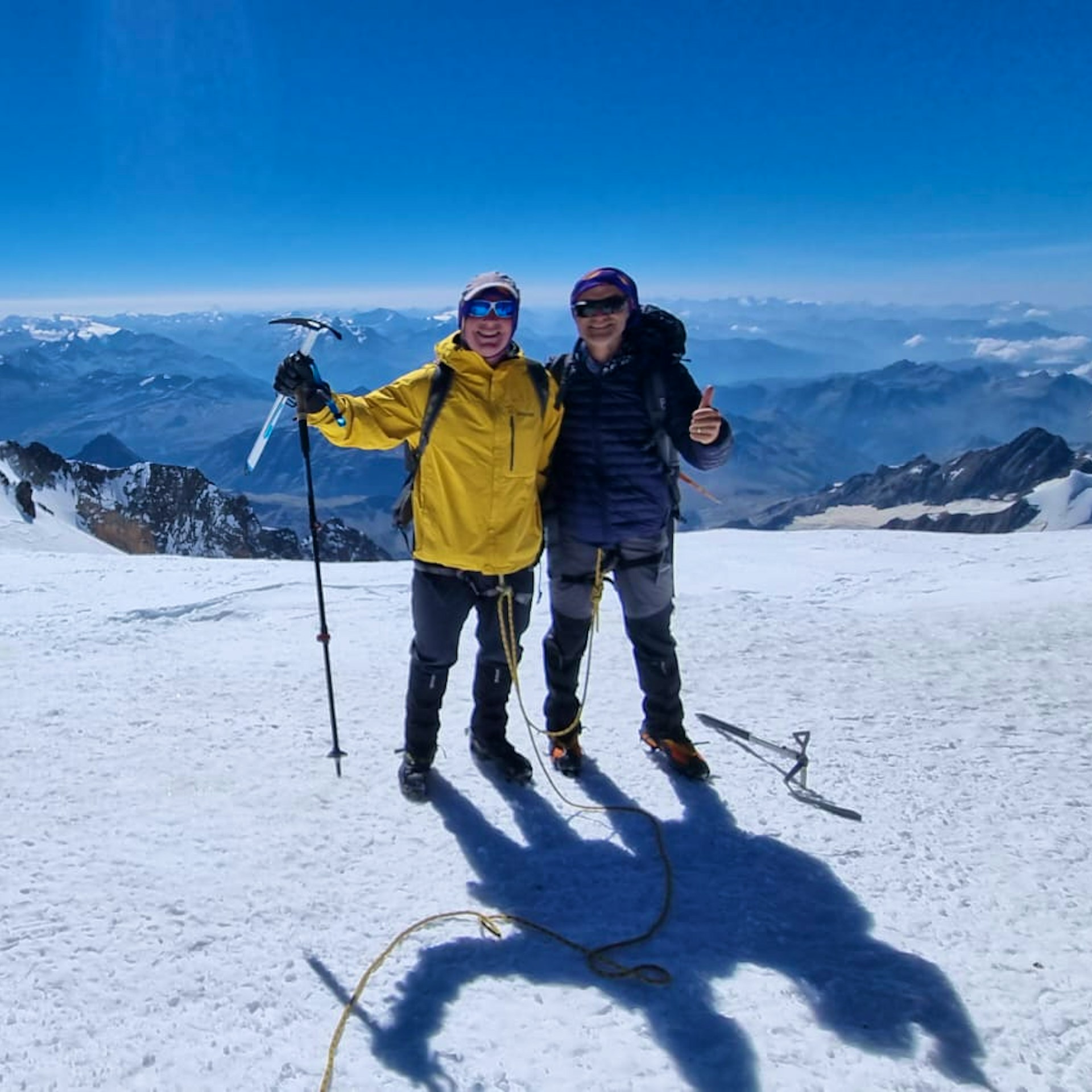
Join a Mont Blanc Summit Expedition
Book with our recommended local guide
Matterhorn
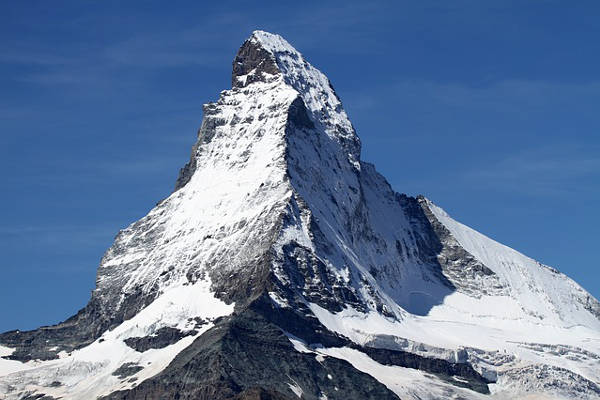
Matterhorn straddles the watershed and border between Italy and Switzerland and is Switzerland’s most famous mountain. The mountain stands at 4,478m which make it one of the highest mountains in the range. Matterhorn has a large, near symmetrical pyramidal peak in the extended Monte Rosa area of the Pennine Alps.
The mountain’s four faces face the four cardinal directions; north, south, east and west. It was first summited in 1865 by a group of mountaineers.
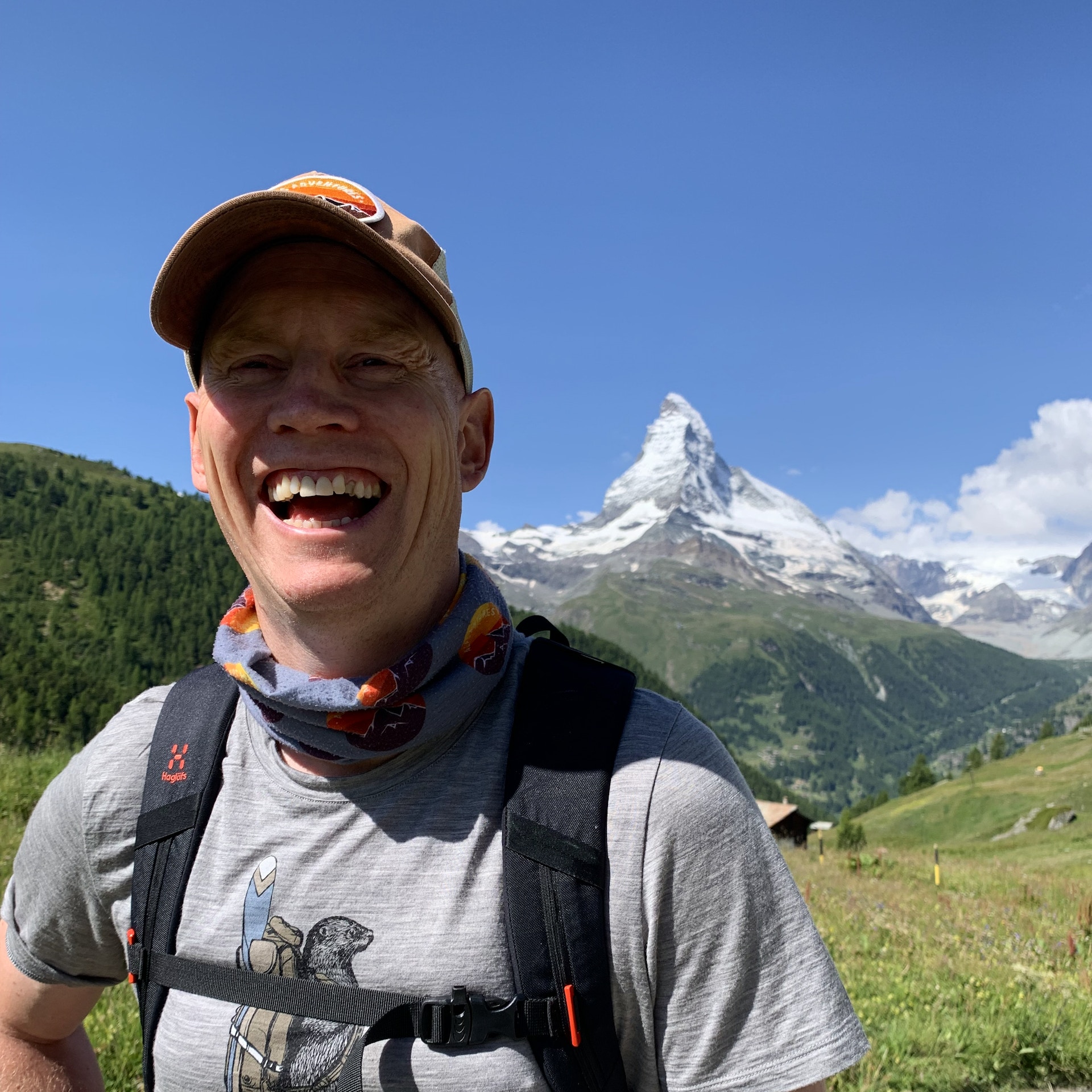
Join a Matterhorn Highlights Trek
Book with our recommended local guide
Monte Rosa
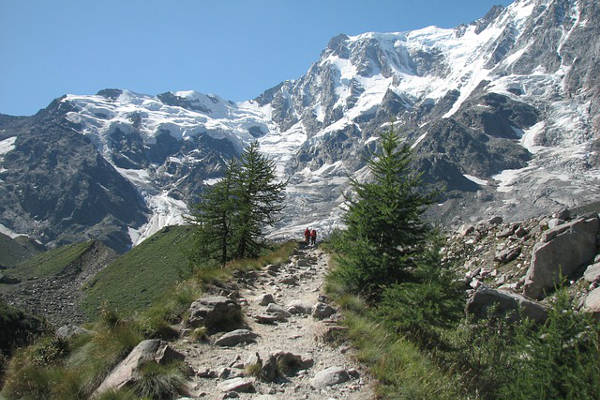
Monte Rosa lies on the frontier of Italy and Switzerland in the eastern part of the Pennine Alps. The mountain is 4,634m above sea-level making it the second highest mountain in the Alps and the highest mountain in the Swiss section. It has 10 peaks higher than 4,000m.
Monte Rosa, which is flanked by glaciers was first summited in August 1855.
Jungfrau
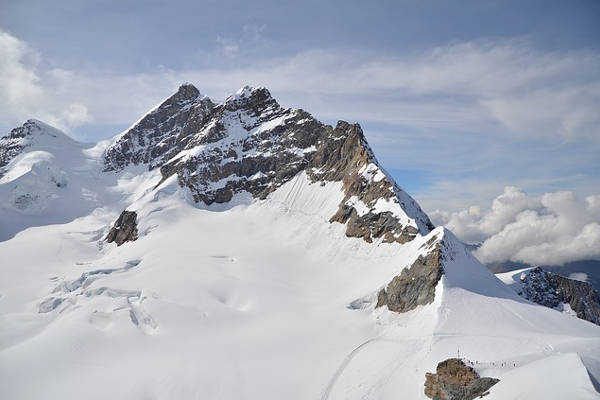
Jungfrau, which falls in Switzerland, is one of the main summits of the Bernese Alps (Jungfrau’s parent range). The mountain is 4,158m tall and is located between the northern Canton of Bern and the southern Canton of Valais.
The first ascent of Jungfrau was in August 1811 on the eastern side by two Swiss brothers.
Weisshorn
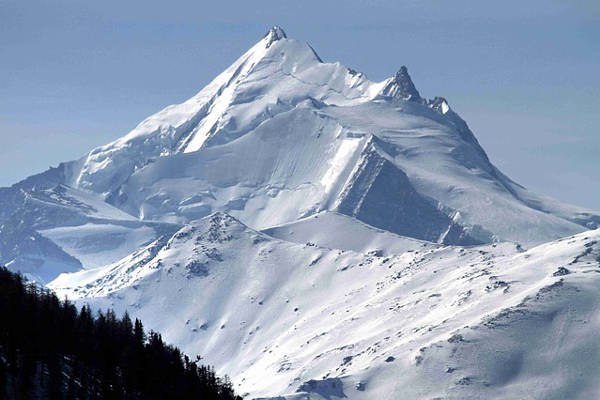
Weisshorn is also located in Switzerland and at 4,505m above sea-level it is a major peak in the Swiss Alps.
Weisshorn forms part of the Pennine Alps and is considered to be the most beautiful mountain not only in Switzerland but in the Alps as a whole. It has a spectacular pyramidal shape and pure white slopes.
It was first climbed in 1861 by John Tyndall and guides.
Notable Hikes in the Alps
The Alps offer some of the greatest supported hiking and walking opportunities in Europe.
The trails are well-maintained, well-marked and connected by hundreds of villages, hamlets, inns and mountain huts where hikers can find accommodation that is clean and comfortable.
You can hike for weeks on end without ever having to carry a tent, sleeping bag, stove or food.
Unfortunately, the hiking season is short, with peak season (where most accommodation is open) is between mid-June to late September.
The Tour du Mont Blanc is one of the best hikes not only in Europe but the world. Although physically challenging, the 170km hike boasts the finest views of the tallest mountain in the region.
The 11-day hike gives you the opportunity to experience some of the most picturesque parts of the continent in less than 2-weeks.
The hike will take you through France, Italy and Switzerland from Charmonix in south eastern France through several famous villages in northern Italy.
Accommodation ranges from boutique hostels to luxury ski resorts and rustic mountain huts.
Get a Tour du Mont Blanc Trek quote from our recommended local guides: 10-day full tour and 4-day highlights tour.
Walker’s Haute Route
This 180km hike will take you through France and Italy in 14 days.
Although difficult the Walker's Haute hike is astounding, you will experience contrasting landscapes such as snowy peaks, lush green valleys and European villages which offer unique beauty on a very demanding hike.
You will be staying in mountain huts, hostels or hotels.
Tour du Monte Rosa
The 9-day hike will take you through the unforgettable scenery of the most popular European mountain range.
The 163km hike across the magical snow kingdom will give you the best views of the awe inspiring ‘four-thousanders.’
The Tour du Monte Rosa hike is considered to be quite difficult, so a good level of fitness is beneficial. Your accommodation along the hike will be mountain huts.
Gran Paradiso
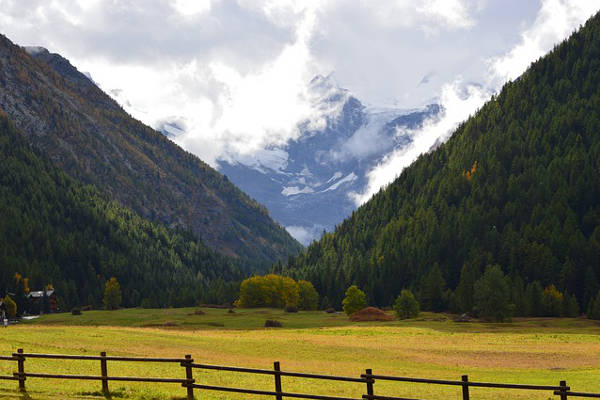
The Gran Paradiso National Park is located in the Alps northwest of Italy and is Italy’s oldest national park. It offers serene valleys and towering mountains. The maximum altitude is 4,061m, which is the summit of Gran Paradiso mountain.
The length and difficulty of the hike vary on which route you take and how long you wish to hike for. There are also hikes in Gran Paradiso that last about a day or two if you’re looking to avoid a great challenge.
The area is remarkably untouched and features empty paths and high passes throughout.
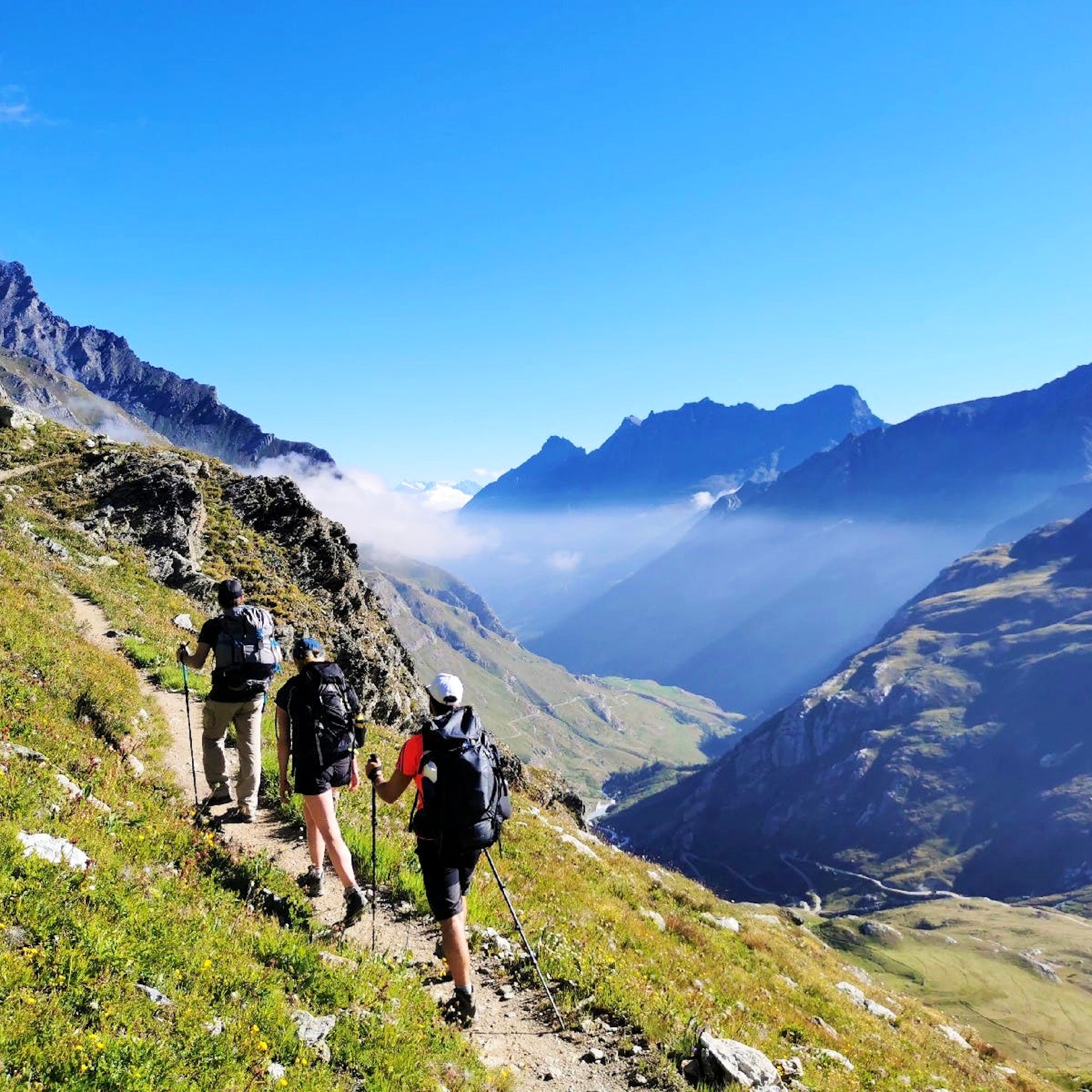
Join a Gran Paradiso Circuit Trek
Book with our recommended local guides
References: Britannica, Wikipedia
Frequently Asked Questions
Which countries are the Alps in?
Where did the Alps get its name?
Why are the Alps important?
How old are the Alps?
